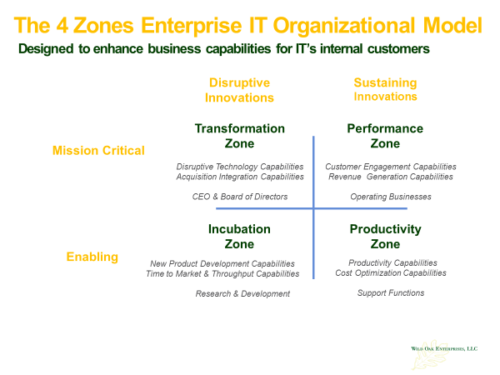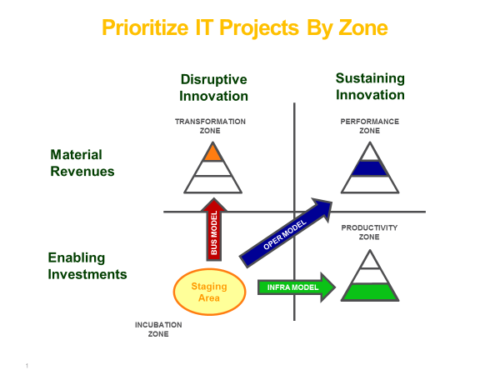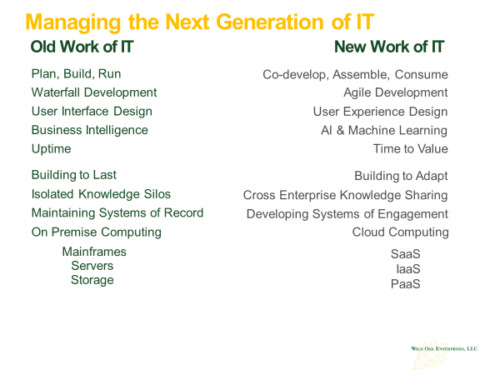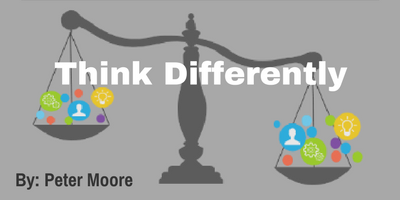Peter Moore is a speaker at the 2018 CIO Peer Forum.
Finding the right balance between operational excellence and business innovation
The CiO.com 2017 State of the CIO survey found that 72% of respondents said they were struggling to strike the right balance between operational excellence and business innovation. 87% of respondents also said that “juggling transformational and functional responsibilities has become a permanent job requirement, not a short-term challenge.”
To effectively manage this multifaceted workload will require CIOs and their leadership teams to think very differently about how the IT function is organized; how their project prioritization process can accommodate ever-increasing demand; and how they can recruit, develop and retain the relevant skills and capabilities needed to carry out the new work of IT. As Phil Potloff said when Edmunds.com put him in the CIO role several years ago, “one of the reasons they asked me to be CIO was to bring new thinking, new processes and new ways to get work done.”
Rethinking the IT organization model
Traditional IT is organized around the functions it carries out and the services it provides instead of the constituencies it serves and the business capabilities it enables. What would your organization look like if you structured it around the 4 Zones Model to serve multiple constituents and enable a multitude of business capabilities that deliver a variety of desired outcomes, as shown on the slide below.

The 4 Zones Model is designed to provide a new organizational framework that helps CIOs and their leadership teams find the right balance between:
- A need for innovative approaches to enable their organizations to deploy five disruptive technologies: Cloud, Mobile, Social, Data Science and Internet of Things.
- A need to evolve from lengthy waterfall-based technology implementations to the more rapid agile development approach. The Plan, Build, Run model will be displaced by a Co-Develop, Assemble, Consume model.
- A need to embed a trapped value assessment process to identify opportunities to shift resources and funds from maintaining legacy systems of record to developing new systems of engagement and systems of intelligence.
- A need to utilize new methodologies and tools to recruit, develop and retain the relevant new skills and capabilities necessary to lead and manage a digital enterprise.
It is also designed to better enable IT to enhance the critical business capabilities needed to effectively operate in each zone. For example, in the performance zone, this outcome-based approach with internal business partners starts with the question: How can technology better enable the customer engagement or revenue-generating capabilities of your business? The answers to that question help to align future IT investment priorities with critical business outcomes.
Rethinking the IT project prioritization process
In most traditional IT organizations, the project prioritization process is tied to the annual planning and budgeting process. It is driven primarily by resource capacity and funding constraints that ultimately determine which projects make the cut and which don’t. This results in a high level of frustration for those internal customers who can’t get what they need and want for their businesses or support functions.
By contrast, early adopters of the 4 Zones framework and tools as shown in the chart below have started the prioritization process by segmenting potential new projects in the following way:

- Are they sustaining innovations or disruptive innovations?
- Are they enabling systems productivity and cost optimization?
- Are they increasing business unit performance and revenue growth?
- Are they enabling business model transformation?
Each project has its own time-to-value cadence and metrics but all of them require IT to be fast, adaptable and bring an enterprise-wide perspective to the priority-setting process.
In addition, rather than using resource capacity and budgeting constraints to make project prioritization decisions, IT Executives and their internal partners should start their prioritization discussions by asking three key questions:
- Should we do it? Does it align with and support critical business outcomes?
- Can we do it? Do we have the relevant skills, capabilities and tools to achieve the outcome?
- Did we do it? Do we have the right metrics to measure the achieved outcome vs. the desired outcome?
This new approach moves project prioritization from a budget exercise to a business value creation exercise.
A new charter for the new work of IT
IT’s current charter is primarily built around the old work of IT as shown in the left-hand column of the chart below. While much of this operational excellence work must continue to be done, it does not reflect the new technology-enabled innovation work shown in the right-hand column that companies increasingly expect IT to deliver.
 The new work of IT also calls for a complete reassessment of the relevant skills and capabilities the IT team needs to manage this multifaceted workload. For example, the skills needed to deploy an inside-out user interface design approach are very different from the skills needed to deploy an outside-in user experience design approach. As the CIO.com survey validated, finding the right balance between operational excellence and business innovation is now a permanent job requirement for IT.
The new work of IT also calls for a complete reassessment of the relevant skills and capabilities the IT team needs to manage this multifaceted workload. For example, the skills needed to deploy an inside-out user interface design approach are very different from the skills needed to deploy an outside-in user experience design approach. As the CIO.com survey validated, finding the right balance between operational excellence and business innovation is now a permanent job requirement for IT.
As such, I think it’s time to write a new charter for IT. A charter that properly reflects the new and expanded role that IT brings to any organization. A charter that:
- At the strategic level, defines IT’s role in enabling the transformation of a company into a digital enterprise
- At the operating level, defines IT’s role in co-developing the business and functional capabilities with its internal partners to enable a company to successfully compete as a digital enterprise
- At the functional level, defines IT’s role in recruiting, developing and retaining the new skills and capabilities needed to support a digital enterprise
Unfortunately, left to my own devices a task of this magnitude is well beyond my reach. Therefore, I am looking for any brave souls who would like to embark on a collaborative venture to achieve this goal. If you are one of those people, please let me know.
As always, I am interested in your comments, feedback and perspectives on the ideas put forth in this blog. Please e-mail them to me at pdmoore@woellc.com
